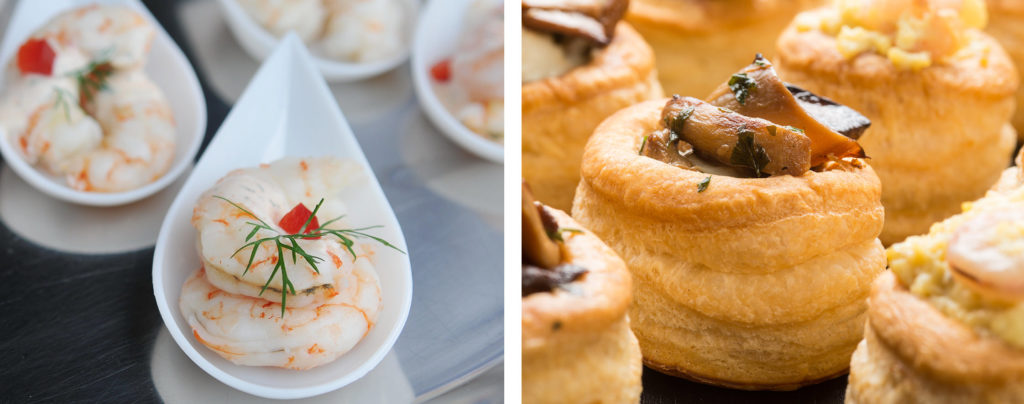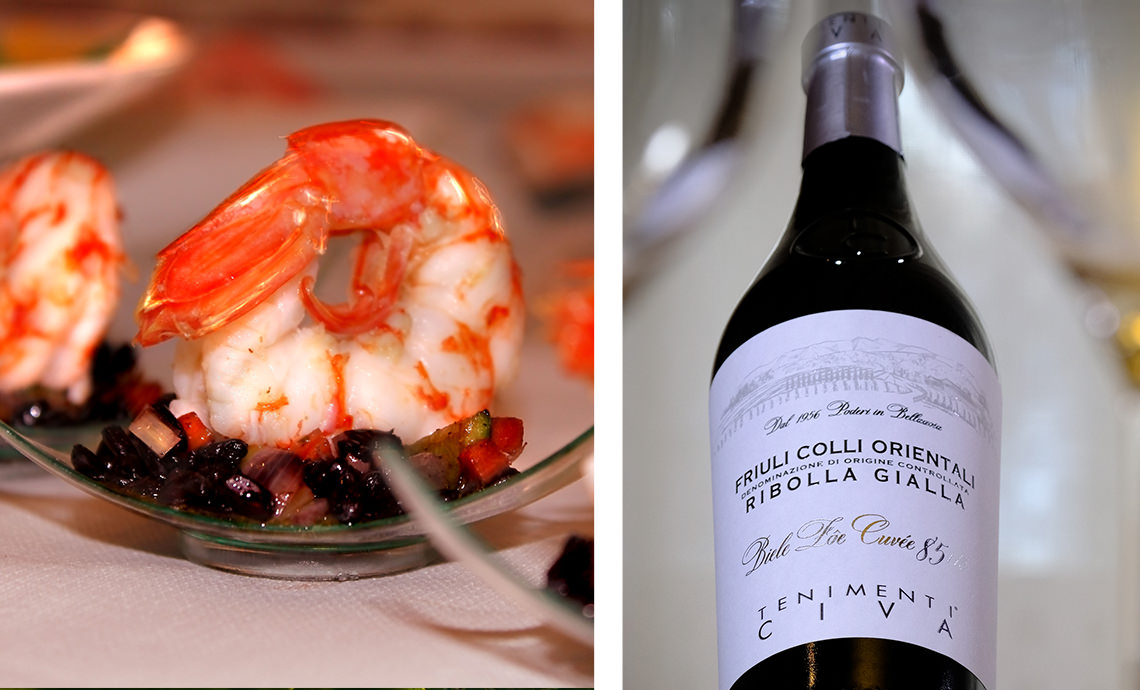Wine and Food: rules and pairings with Ribolla Gialla
The issue of how to pair food and wine was a matter for discussion as far back as the Middle Ages. At that time, cold moist dishes, such as fish, were accompanied by warm, strongly-flavoured wines. The aim was to compensate for what the food lacked with the characteristics of the wine.
Today, to make a successful pairing with Ribolla Gialla, there are some basic guidelines to follow. We should however remember that we are in the field of taste and that there can be no hard and fast rules.
The first to theorize about the pairing technique, placing the emphasis on contrasting flavours, was Luigi Veronelli, in the 1960s. The concept is simple: you need to identify the flavour components of the food in order to know what to enhance and what to compensate with the help of wine.
The hard and soft components of Ribolla Gialla
The “hard” components of a wine are the tannins in reds – typically providing sensations of roughness and astringency –, acidity, carbon dioxide, tanginess, and the pleasant bitterness felt before swallowing the wine. In particular, the first three of these counteract fats, the greasiness of food and sweetness. The presence of mineral salts, on the other hand, emphasizes the flavour of the wine. The sugars, alcohol, glycerin, and extract – this is the body of the wine – are the “soft” components. Their role is to counteract the salty and spicy notes in food.
Sweet, salty, sour, bitter, hot and spicy combine differently in each dish. Once the dominant flavours of a dish have been established, you need to decide whether to enhance or attenuate them by choosing wines with similar or contrasting characteristics.
In this way the mouth will always be “clean”, ready to receive the next mouthful of food and the next sip of wine, obviously not at the same time – wine drunk after swallowing the food can interact best with the flavours and textures of the dish.

Flavour contrasts
To make a correct pairing, we take into account contrasting flavours, also considering the structure, length and aftertaste of the food and wine. These, in fact, should be comparable on the same terms, that is, they should have the same structure, bearing in mind that we should not compromise the wine’s drinkability. There is no point matching a structured dish with an equally structured wine if the result is a cloying combination.
The strength of aromas in the food and wine and their aftertaste, that is, the sensations that remain after swallowing, must also be on a par.
AFFINITY OF FLAVOURS
When a pairing based on contrasts is likely to overpower the delicate nature of the ingredients of a dish, a combination based on affinity or some points in common is the best option. In other words, a wine with a similar taste should be chosen – delicate with delicate, strong with strong –, while being aware that such a combination may not fully cleanse the palate.
Among its qualities to be exploited in pairings with food, still Ribolla Gialla displays marked acidity, a savoury note, moderate alcohol content, good structure and delicate aromas.
Pairing with Ribolla Gialla: some tips
Bread crostini with herbed lardo and acacia honey or a yellow corn polenta sandwich with potato frico deserve the attention of Ribolla, which cleanses the palate with its acidity, but is also sufficiently rounded to absorb the saltiness of the food.
With seawater fish, Ribolla Gialla manages to penetrate their flesh and at the same time not overpower their delicate flavour. Sea bream, sea bass, umbrine, John Dory and turbot have delicate flesh, making them suitable for steaming or grilling.
With meaty crustaceans such as red king prawns, prawns, tiger prawns and lobster, the combination with Ribolla Gialla, whose aromas are never overpowering, is a good choice, and helps avoid the undesirable metallic sensation which occurs with some wines when paired with these foods.
Mushrooms as a starter, such as porcini or Caesar’s mushrooms dressed solely with extra virgin olive oil, can be paired with white wines, such as Ribolla, which offer moderate body, lively acidity and good length.
Follow us on Facebook and Instagram
Maria Cristina Pugnetti
None foundCould it be interesting for you:

